
7 Traditional Wagashi Japanese Sweets That Are Both Beautiful and Delicious
Traditional Japanese sweets, called wagashi, are both a treat for the tastebuds and the eyes. Japanese sweets tend to be seasonal, highlighting the wonders of each season. There are many types of traditional Japanese sweets, so if you're having trouble deciding which ones you want to try, take a look at this list of recommended traditional Japanese sweets and when they are in season!
This post may contain affiliate links. If you buy through them, we may earn a commission at no additional cost to you.
Japanese traditional sweets (wagashi) tend to be very seasonal since they use seasonal ingredients. Nowadays, you will be able to buy these sweets on the list all year round, but you will be able to buy it more easily when they are in season.
1. Hishimochi (March)
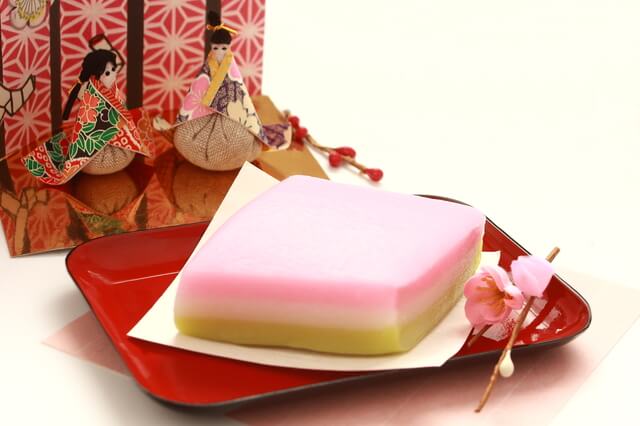
Hishimochi is diamond shaped mochi, which are usually red (pink), white and green in color. It is dedicated with the Hina ningyo (dolls of the emperor and empress) for the Hinamatsuri (Girls' Day, March 3rd ). It is used as more of an offering and therefore although many people know what it looks like, often they have never tasted it before. It actually tastes just like normal mochi and needs to be cooked before you can eat it. However, sweets which are made to look like Hishimochi are often sold, so you can try those instead.
Our Top Tips
Japan Shinkansen, Narita Express (N'EX) & Express Train Tickets
Plan ahead by booking your shinkansen, airport train, and express train tickets online in English. Have the tickets sent to you by mail or collect them at the station once you're in Japan.
2. Botamochi/Ohagi (March/September)
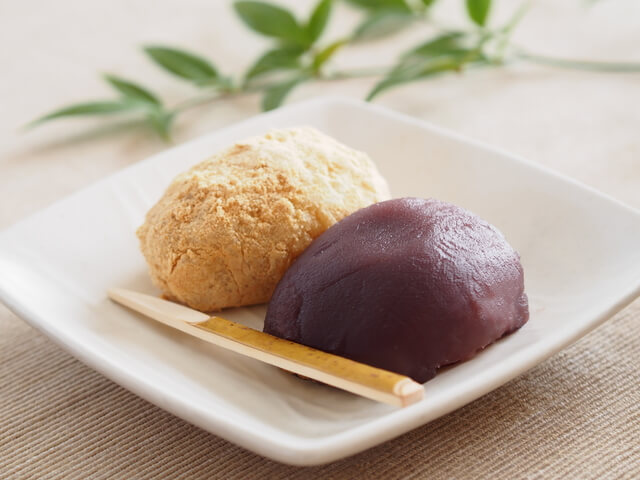
Botamochi/ohagi is cooked sticky rice covered in red bean paste or sesame seeds or kinako (soybean flour). There are several theories on what the differences are between botamochi and ohagi but often they are used interchangeably. The most commonly accepted theory is that they are the same thing but in spring, it is referred to as botamochi and in fall it is ohagi.
3. Sakura mochi (April)
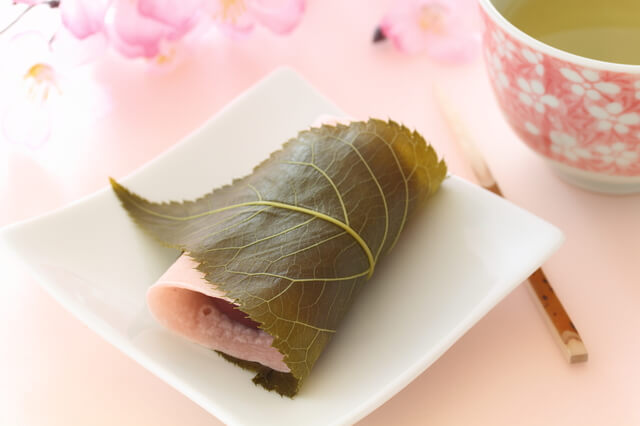
Sakura mochi is mochi wrapped in a salted leaf of a cherry tree and is eaten in spring. There are two kinds of sakura mochi: Chomeiji sakura mochi (picture left), which originates from Tokyo, and Domyoji sakura mochi (picture right), which originates from Kyoto. These days, usually you will be able to buy both kinds wherever you are. The salted cherry leaves are edible but people are divided between those who eat the leaves and those who do not.
4. Yomogi mochi (April)
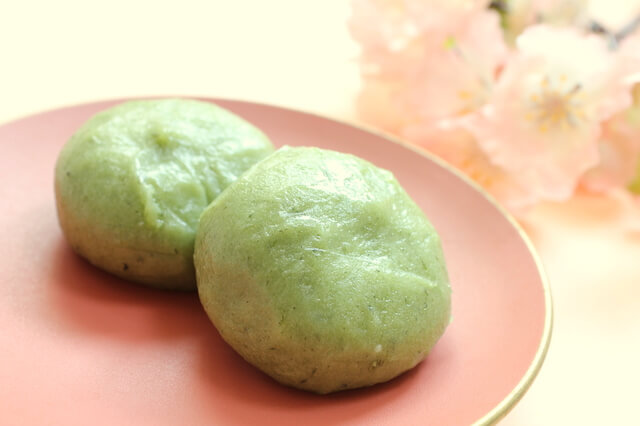
Yomogimochi is a sweet with mugwort young shoots mixed into mochi, making it green. It is typically a spring time sweet. However, young shoots are boiled and dried, so that yomogimochi can be made throughout the year.
5. Kashiwa mochi (May)
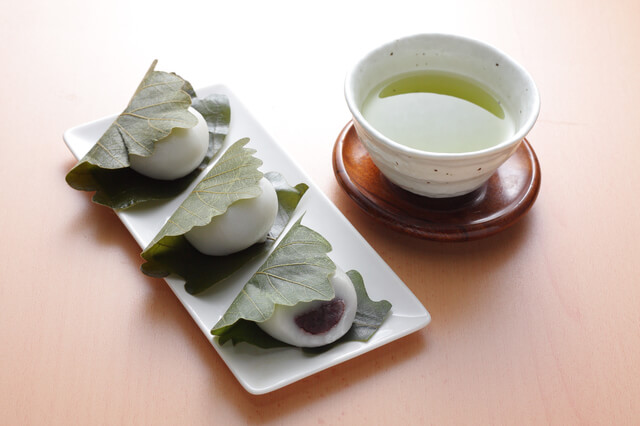
Kashiwa mochi is mochi made of Uruchi rice flour with red bean paste wrapped in an oak leaf. Like sakura mochi, some people eat the oak leaf and some do not. It is often associated with Children's Day, May 5th. Kashiwa mochi originated in Edo (current Tokyo) in 1745-1786 CE. The reason Kashiwa mochi is offered on Children's Day is because oak leaves do not fall off until new leaves emerge in the spring and therefore is believed to be auspicious.
6. Kuzu mochi (June)
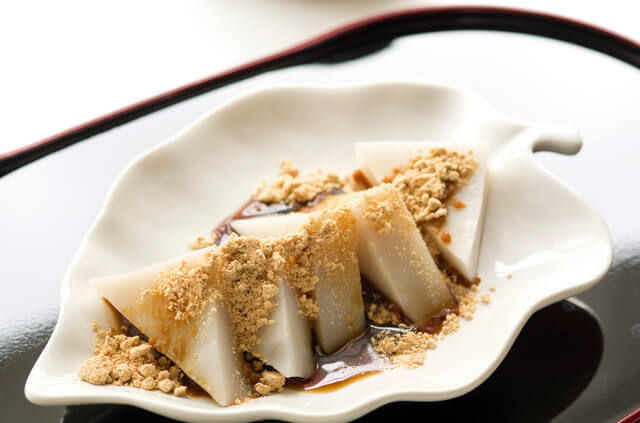
Kuzu mochi (葛餅) is mochi made of Kuzu flour. It is important to note that it is different from Kuzu mochi (久寿餅) eaten in Tokyo area which is made of fermented flour. It looks transparent and is eaten with kinako (soybean flour) and brown sugar syrup. Since Kuzu mochi from Tokyo area also is eaten with kinako and brown sugar syrup and looks similar, if you are not sure, just ask whether it is made of "Kuzuko", kuzu flour, or not.
7. Tsukimi dango (September)
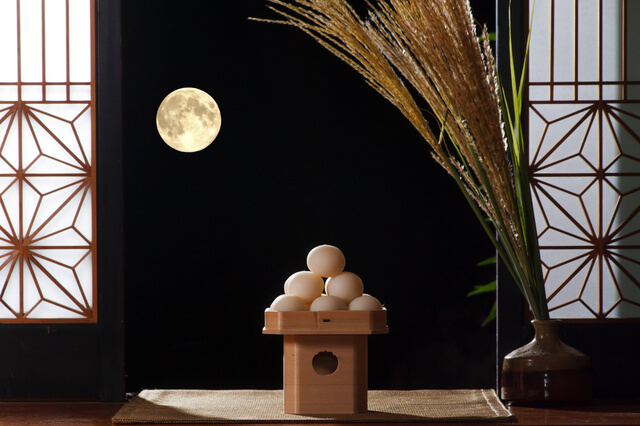
Tuskimi dango are round rice dumplings offered on the full moon in September. Although the origin of this tradition is not certain, it is believed that Tsukimi dango are offered to thank the harvest. Tsukimi dango are usually displayed in the way shown in the photo using fifteen dango. Although you will not be able to see from the photo, there are actually two dango on the top layer. The dango pyramid is made with nine dango on the bottom, four in the middle and two on the top.
The information in this article is accurate at the time of publication.


